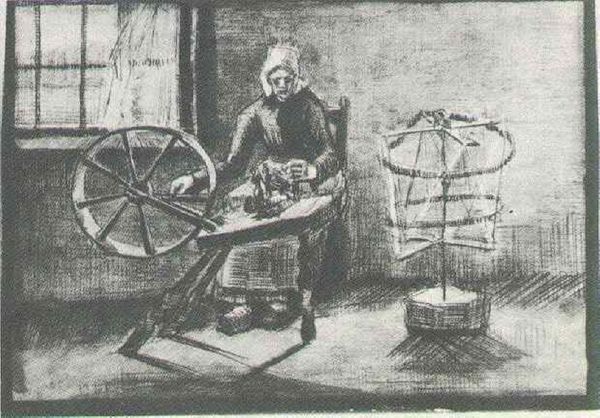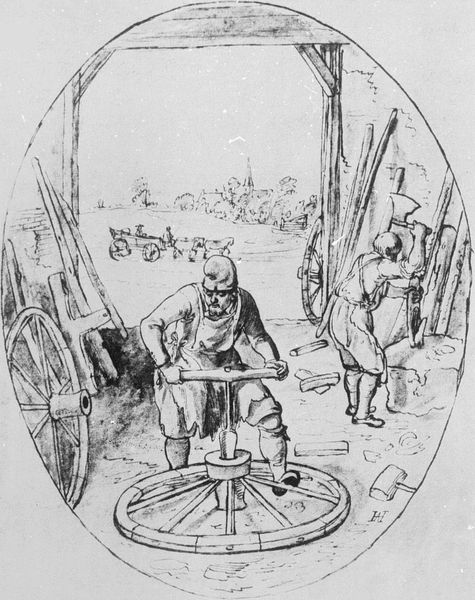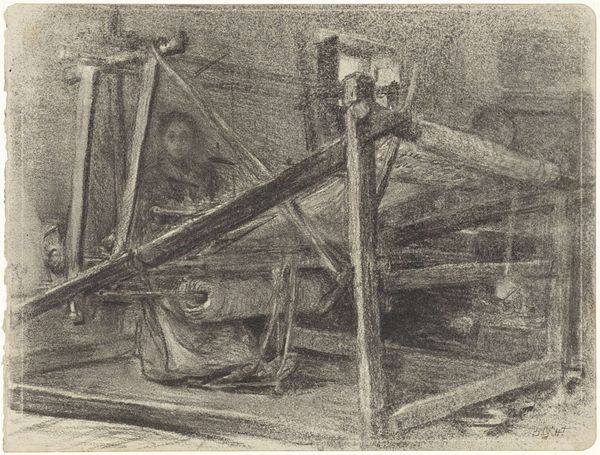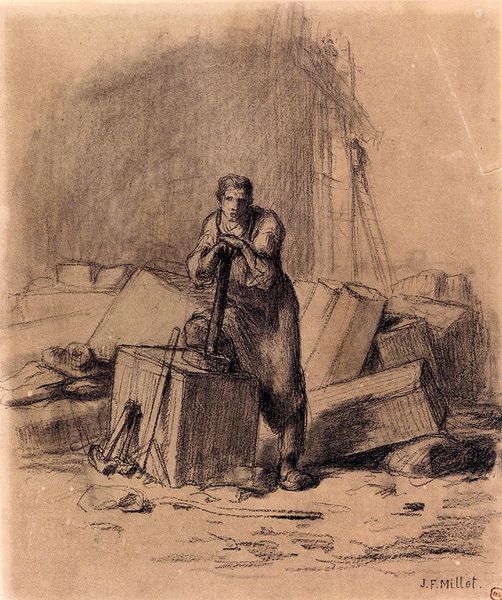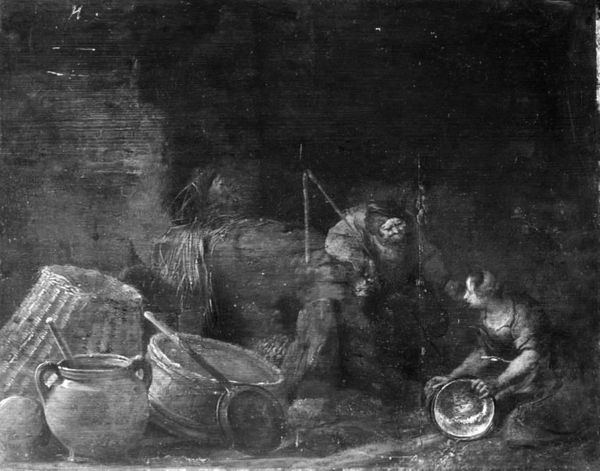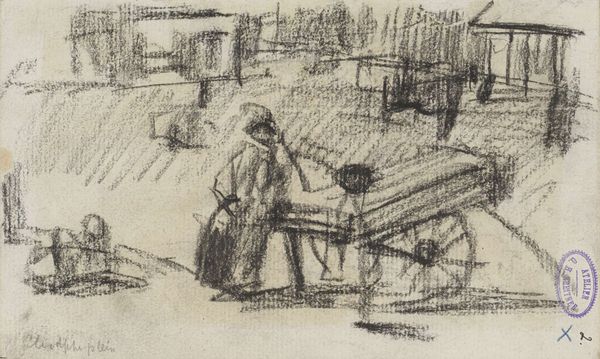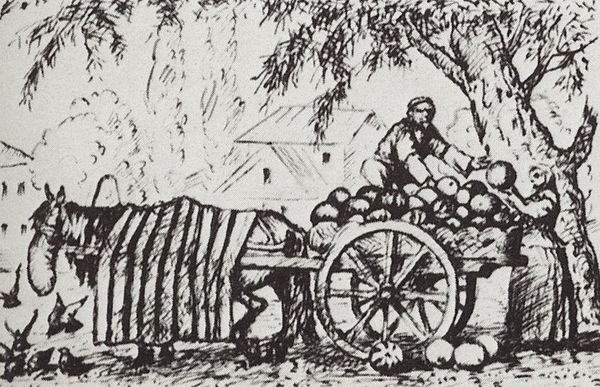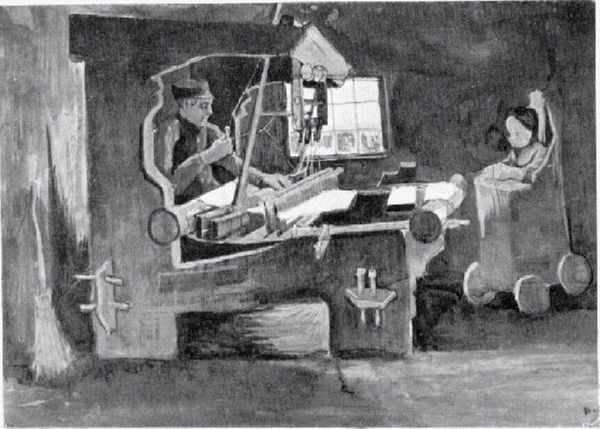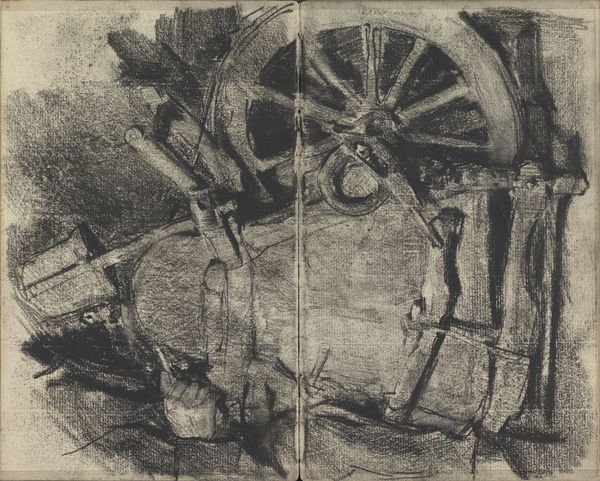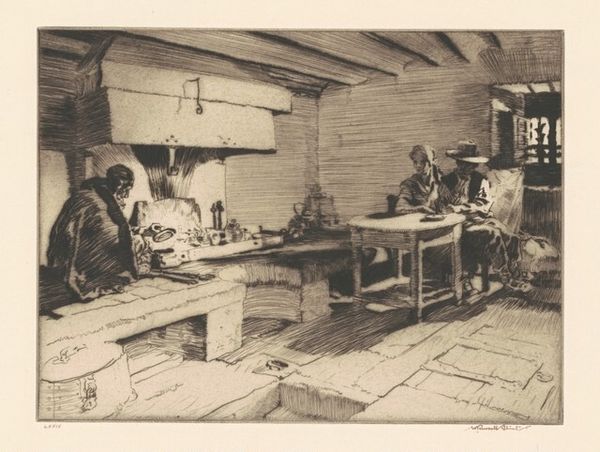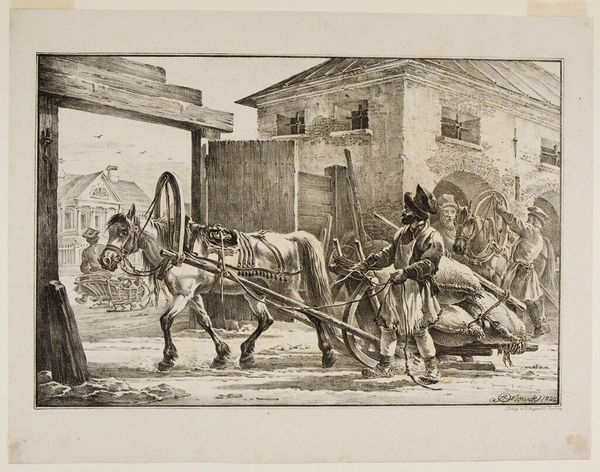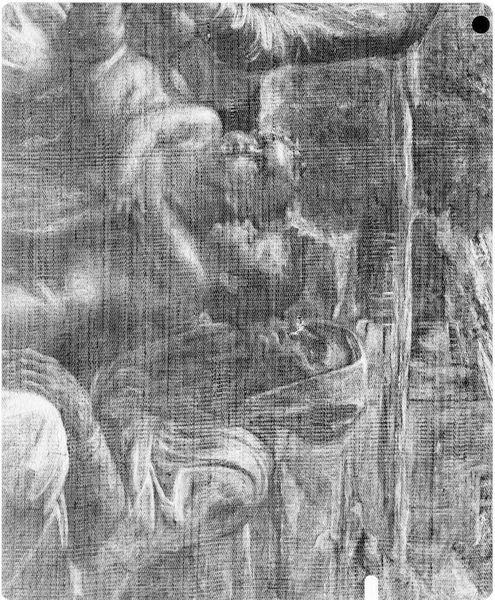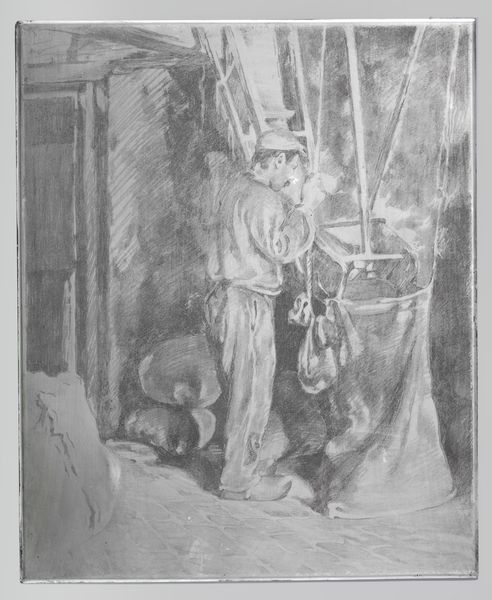
drawing, pencil
#
drawing
#
pencil sketch
#
landscape
#
sketch
#
pen-ink sketch
#
pencil
#
genre-painting
#
post-impressionism
#
realism
Copyright: Public domain
Curator: Look at this compelling work by Vincent van Gogh, a pencil sketch titled "Woman Reeling Yarn," created in 1884. It resides here, at the Kröller-Müller Museum in Otterlo. Editor: My first impression is…work. It's heavy, even though it's just a sketch. I feel the weight of the labor radiating from the figure and the tools of her trade. A solitary occupation. Curator: Indeed. The sketch emphasizes the tools, and their prominent presence frames the woman in her task. The starkness of the medium reflects a clear-eyed assessment of manual labor. It makes us consider the conditions under which such work was performed. The raw materials, the construction, the domestic industry. Editor: Yes, it is not a romantic view, it is how she is spending her life. Van Gogh doesn't sentimentalize her existence. Instead, he shows a clear, almost brutal, picture. The lack of detail on her face does contribute to the effect; she’s every woman. Curator: Precisely. Her individual identity becomes somewhat subsumed by her role and function in the production process. Notice how Van Gogh's sketch incorporates elements of Realism by foregrounding the realities of working-class life. It departs, however, in the expressive, Post-Impressionistic feel rendered through his unmistakable expressive lines. Editor: It's as though he's stripping away the superficial to reveal the core. What would be left? The endless cycle, one suspects. Van Gogh gives her dignity in her struggle by actually representing that struggle without filter. A raw image about production. Curator: The stark, unforgiving medium emphasizes a cycle of production where the worker's identity becomes secondary to the materials transformed, a sort of materialist meditation by Van Gogh in stark charcoal. Editor: Makes you wonder about all that labor…now commodified, accessible as… yarn. Something about capturing that process with such unforgiving marks and strokes seems almost a way of honoring a moment or activity we rarely consider otherwise. Curator: Ultimately, Van Gogh invites viewers to reflect critically on labor, production, and consumption, questioning established hierarchies within art and society. Editor: Yeah, you see the machinery first, then her…it all drives home that concept perfectly. I appreciate being forced to slow down.
Comments
No comments
Be the first to comment and join the conversation on the ultimate creative platform.
